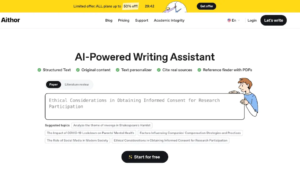Introduction to Editing and Proofreading
Editing and proofreading are two essential steps in the process of crafting a high-quality blog post. Editing involves making sure that your content is well-organized and flows smoothly, while proofreading ensures that there are no errors in grammar, spelling, or punctuation. Both steps are important in ensuring that your final product is polished and professional.
Benefits of Editing and Proofreading
Crafting a high-quality blog post requires more than just writing. The editing and proofreading process is crucial for ensuring that your blog post is free of errors and reads smoothly. Here are some of the benefits of editing and proofreading your work:
1. Editing and proofreading catch errors that you may have missed.
2. The editing and proofreading process improve the clarity and flow of your writing.
3. Editing and proofreading help to ensure that your blog post adheres to proper grammar and punctuation rules.
4. Editing and proofreading give readers a feeling of professionalism and trust in your writing.
5. Editing and proofreading help to improve the overall readability of your blog post.
What Kinds of Mistakes Can Editing and Proofreading Catch?
There are many different kinds of mistakes that editing and proofreading can catch. Here are just a few examples:
-Spelling errors
-Grammatical errors
-Punctuation errors
– factual inaccuracies
-Inconsistencies in style or tone
-Clarity issues
Editing and proofreading your blog post can help ensure that it is free of any of these types of mistakes, making it more likely to be well-received by your readers.
How to Edit and Proofread Your Writing
If you want to make sure your blog post is of the highest quality, it’s important to edit and proofread your work before you hit publish. This can seem like a daunting task, but it’s important to take the time to do it right. Here are some tips on how to edit and proofread your writing:
1. Read your work out loud. This will help you catch any errors or awkward phrasing.
2. Use spell check and grammar check. These tools can be helpful, but they don’t catch everything so it’s still important to read through your work yourself.
3. Get someone else to read your work. Another set of eyes can often spot things that you missed. Ask a friend or family member to read through your article and give feedback.
4. Take a break from your work before you start editing and proofreading. This will help you come back with fresh eyes and catch anything you may have missed the first time around.
5. Have a style guide on hand. This can be helpful for knowing when to use certain punctuation marks or how to format things like lists or headings.
Techniques for Reliable Copy Editing and Proofreading
Editing and proofreading are two critical steps in the process of crafting a high-quality blog post. Here are some techniques you can use to ensure that your copy is error-free:
Read your text aloud: This will help you catch errors that you might otherwise miss.
Read your text backwards: This technique forces you to slow down and focus on each individual word, making it easier to spot typos and other errors.
Use a spell checker: This is a valuable tool, but don’t rely on it exclusively – it won’t catch all errors.
Get a second pair of eyes: Ask someone else to read your text and point out any errors they see.
Common Grammatical Errors To Watch Out For
One of the most important aspects of writing a high-quality blog post is making sure it is free of grammatical errors. Unfortunately, even the most experienced writers can make mistakes from time to time. Here are some of the most common grammatical errors to watch out for:
1. Run-on sentences: A run-on sentence occurs when two or more independent clauses are joined together without proper punctuation or conjunction. This can make your writing sound choppy and difficult to read. To avoid run-on sentences, be sure to use proper punctuation and conjunctions when joining independent clauses.
2.Fragments: A fragment is an incomplete sentence that lacks a subject, verb, or both. Fragments can make your writing sound immature and unfinished. To avoid fragments, be sure that every sentence has a subject and verb, and that it expresses a complete thought.
3. Missing commas: Commas are important for separating ideas and clarifying meaning in your writing. Omitting them can make your writing unclear and difficult to read. When in doubt, err on the side of using too many commas rather than too few.
4. Incorrect pronoun usage: Pronouns must agree with their antecedents in number (singular vs. plural) and gender (male vs female). Using the wrong pronoun can change the meaning of your sentence and confuse your reader. Pay close attention to pronoun usage when editing and proofreading your work.
Polishing Your Writing Through Revision
No matter how great of a writer you are, editing and proofreading are essential for creating high-quality blog posts. Editing helps to improve the overall structure and clarity of your writing, while proofreading catches any typos or grammar errors.
Both editing and proofreading can be time-consuming, but they’re well worth the effort. A well-edited and proofread blog post will make a much better impression on your readers than one that hasn’t been through either process.
If you’re not sure how to edit or proofread your work, there are plenty of resources available online. There are also many professional editors and proofreaders who can help you ensure that your blog posts are error-free and polished.
Conclusion
In conclusion, editing and proofreading are essential for crafting a great blog post. Editing and polishing your writing before publishing it helps you make sure that the content is of high quality, thus ensuring it reaches the right audience. Not only do these techniques help boost the performance of your posts on search engines but also offer readers content with no spelling mistakes or typos, creating an enjoyable experience overall. Therefore, whether you write for fun or professionally, taking editing and proofreading seriously should be one of your priorities when producing content online.



































